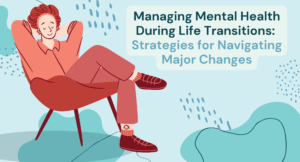More and more, I hear of workplace bullying and see the effects on the victim. This week, the ABC published an article on workplace bullying (see link below) and therefore it seemed timely to discuss this issue. Statistics are difficult to calculate given that many people have limited reporting options and perhaps continue to put up with it or move on to other jobs. There is evidence however, that bullying behaviour is increasing. Furthermore, there is confusion around what constitutes workplace bullying as it is sometimes covert. Frequently, bullying behaviour might look like normal workplace behaviour, but over time adds up to a pattern of abuse, or increases in frequency and/or intensity. Some of the behaviours demonstrated in workplace bullying are: harassment, victimisation, threatening, denigration, and/or intimidation. There may be criticism of work, or at times personal criticism. There may be sexual harassment. There may be isolation from other work colleagues, such as demanding the employee to stay at their desk unless they have a scheduled break.
The effects of such bullying may be wide-ranging. In some cases, people feel as if they are having a ‘break-down’ due to the heightened anxiety they experience. This ‘break-down’ might include panic attacks, rapid heart rate, fast/shallow breathing, and sweating in response to work or thoughts of working. People often respond by working harder and/or longer, hoping they can complete tasks to avoid criticism and ‘please the bully’. Due to the power imbalance in workplaces, it is quite often difficult to be assertive in these conditions; particularly given some worry about the stability of employment. Hence some people feel unable to make a complaint. Furthermore, confidence is often eroded by continual criticism, and it then becomes difficult to look for new work and to leave is usually not an option, unless of course, it becomes intolerable. Too often, the signs are not recognised until too late.
So, firstly, follow your intuition… If it feels like harassment, it probably is. Sometimes other people are also being bullied (nice to know you are not alone). Start documenting the actions of the person, time of occurrences, and if anyone else was around etc. You may need this to prove your case or the pattern of abuse. If your company has a complaints process, use it. This complaints process might be going to your direct supervisor, or their superior, or perhaps your Human Resources Department if your company is large enough. The important thing is not letting the bully get away with it. In some cases, people may take action with the Fair Work Commission. Additionally, if the bullying has led to a physical or mental health problem, and it has been proven, you may be eligible for payment of compensation (in Queensland, this is through Work Cover Queensland).
Don’t let workplace bullies win – they might actually be unaware of how their behaviour affects others. Even if not, if no one complains, they may continue to bully others. Company owners and managers need to realise that a culture of bullying is not good for their best resource; their staff. Happy staff means good productivity and more dollars. Speaking up raises awareness and does everyone a favour.
Sources
Australian Broadcasting Corporation https://www.abc.net.au/news/2019-11-07/workplace-bullying-continues-to-affect-thousands-of-australians/11671062?fbclid=IwAR3i92jv6eq6mgjuuCIbTjB9Mw1Sa0F_rK5H729_PZPIn8qAz_75EaP7jr0



